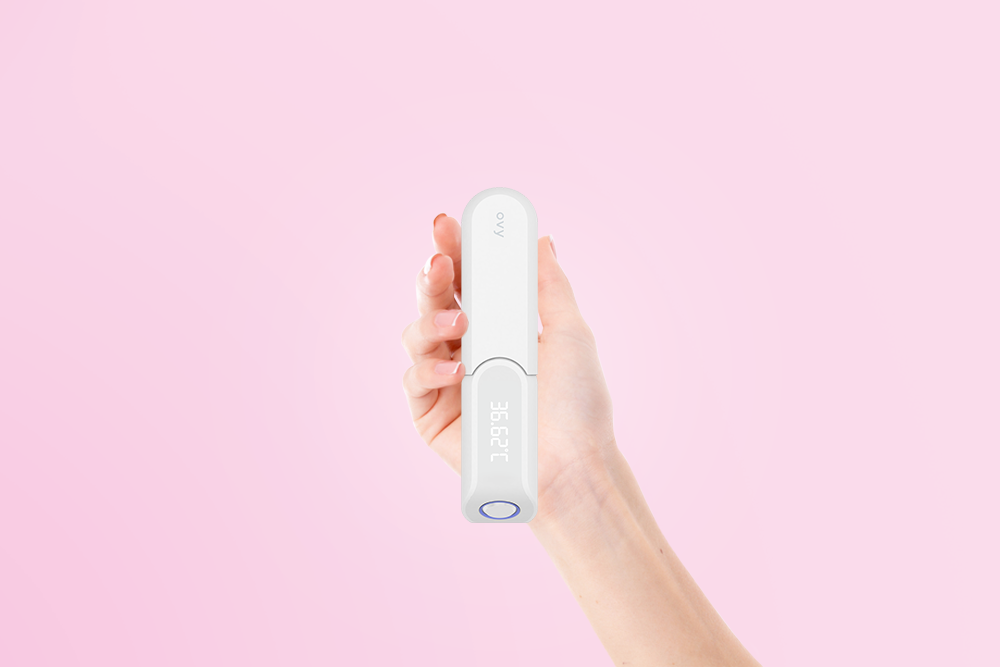Key Takeaways
- Cervical mucus is one of the two most important body signals for evaluating the cycle according to the symptothermal method.
- The consistency changes depending on the phase of the cycle.
- With a little practice, evaluation is quite simple.
For many decades, the symptothermal method, i.e. the evaluation of at least two body signals, has been used by women* to track their cycle and when they want to have children.
In addition to measuring the basal body temperature, evaluating the cervical mucus increases the reliability of the calculation of fertile days. For this purpose, the cervical mucus (also known as cervical mucus) is observed daily, i.e. it is taken from the vagina and its consistency is evaluated.
However, women* who have only just started to interpret their body signals are often still unsure due to a lack of experience and practice. Here you can find out how observing cervical mucus works and what you need to bear in mind.
Evaluating cervical mucus
Is cervical mucus the same as discharge?
The cervix (cervix uteri) is the lower part of the uterus that connects it to the vagina. During a cycle, the uterus produces mucus. This should not be confused with discharge caused by disease or infection. Discharge often occurs in conjunction with itching or pain. This does not include "excitatory mucus" either.
How does cervical mucus change during the menstrual cycle?
Cervical mucus changes during the menstrual cycle in terms of quantity, color and consistency due to the influence of various hormones. With regular and practiced observation, it can provide reliable information about the cycle phase and specifically about the time of ovulation.
What is the function of cervical mucus?
The function of cervical mucus is to transfer sperm to the egg and promote fertilization.
How do I check the cervical mucus?
Of course, every woman* works differently and has to find out for herself how exactly she prefers to track her cervical mucus. For a meaningful check, it is necessary to check the mucus daily at the same time of day, preferably even several times a day in the early stages. You could therefore check your cervical mucus first thing in the morning and again during the day until you go to sleep.
This will make you aware of what you feel at your vaginal entrance: A wet or dry feeling, sometimes even an itch?
You also check what you can see. You can see the cervical mucus directly, for example in your underwear. You can also easily remove the mucus at the entrance to the vagina with your fingers, ideally before going to the toilet. In some women, the fluid does not always reach the entrance to the vagina - in this case, it can be removed directly at the cervix (about eight to ten centimetres inside the vagina).
How does the cervical mucus change around ovulation?
You can use toilet paper to check whether the cervical mucus is spinnable, which happens around ovulation. You can then see whether the cervical mucus can be pulled apart as a thread.
You can also check the same thing with two fingers. Spinnable cervical mucus feels and often looks similar to raw egg white. Some women* notice that the cervical mucus comes out in long strings when they urinate, even when they press gently. It then floats to the surface in the water.
What happens if I don't see any cervical mucus?
The changes described vary greatly from person to person. Whether you notice your cervical mucus in the way described, differently or not at all does not mean that ovulation is not taking place.
Of course, self-observation also takes a few cycles of practice, especially for women* who are not yet very familiar with their body and natural cycle.
For women* who observe very little or no cervical mucus, palpation of the cervix as a second body symptom in addition to temperature evaluation replaces cervical mucus observation.
How do I evaluate the cervical mucus?
The next step is to evaluate the consistency of the mucus. The development of cervical mucus can basically be divided into three phases.
Start of the cycle: Immediately after the period, only little mucus is produced and the vagina feels dry or only slightly moist. The cervical mucus is then rather yellowish-cloudy, lumpy or viscous.
Ovulation: Shortly before ovulation, the vagina becomes wetter and more cervical mucus is produced. It is crystal clear, stretchable between the fingers and its consistency is reminiscent of raw egg white.
End of cycle: The mucus becomes thicker, creamier and whiter again.
How do I document the changes?
The phases and corresponding changes in vaginal sensation and the appearance of cervical mucus provide information about the cycle phase and specifically about ovulation.
End of cycle: The mucus becomes thicker, creamier and whiter again.
How do I document the changes?
The phases and corresponding changes in vaginal sensation and the appearance of cervical mucus provide information about the cycle phase and specifically about ovulation.
Cervical mucus monitoring is based on two principles: Sensation and sight. The cervical mucus is observed and documented during the day. If the cervical mucus quality changes, you can record both data. Later, the value that has a higher quality is used in the calculation. According to the symptothermal method, there are abbreviations for each cycle phase.
How do I use the Ovy app for documentation?
The cervical mucus observations of each day are summarized in the Ovy app with the corresponding abbreviations (d, ∅, f, S or S+).
You can carry out the observations during the day or in the evening, even several times if there are deviations. The cervical mucus for the day with the highest quality is included in the calculation.
Medically Reviewed
This text was created by medical editors on the basis of specialist medical literature and current studies. Our aim is to work scientifically, identify sources and regularly check that the content is up to date.
References & Literature
- Leitlinien der Deutschen Gesellschaft für Gynäkologie und Geburtshilfe Juli 2004, pro familia
- Pearl-Index, Methode. "3.1 Übersicht und Pearl-Index." Facharztwissen Gynäkologie 3 (2021): 42.
- Struck, Dorothee. Verhüten ohne Hormone. Stadelmann Verlag, 2019.





